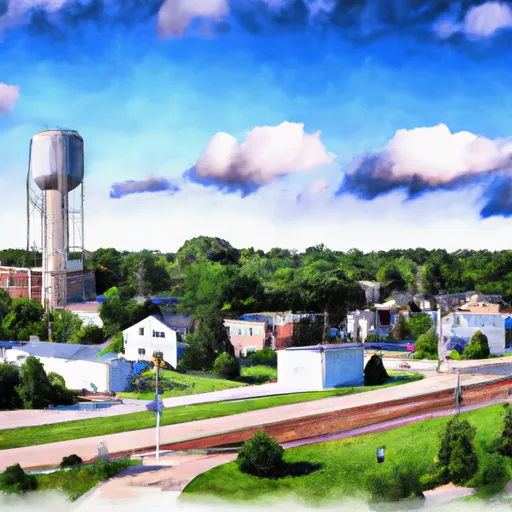-
 Snoflo Premium
Snoflo Premium
Get unlimited access to all our content
With no Ad interruptions! - Start Your Free Trial Login with existing account
Rollag
Eden Index
Climate
5.4
•
Recreation
0.3
•
Community
4.3
•
Safeguard
3.3/10

Rollag, Minnesota is a small town located in Clay County in the central part of the state. It experiences a continental climate, characterized by cold winters and warm, humid summers. Average temperatures range from around 10°F (-12°C) in winter to 80°F (27°C) in summer. Snowfall is abundant during the winter months, making it an ideal destination for winter sports enthusiasts.
Rollag is situated near the Buffalo River, which offers hydrology constituents such as diverse aquatic plant life and various freshwater fish species. The river provides opportunities for fishing, canoeing, and kayaking. Additionally, the town is surrounded by several lakes, such as Lake Six and Lake Fifteen, which offer boating and fishing experiences.
Outdoor recreation opportunities in Rollag include hiking and biking trails, perfect for exploring the beautiful countryside and enjoying nature. The town hosts an annual Threshing Show, where visitors can witness vintage farming demonstrations and tractor pulls. This event attracts people from all over the region and is a highlight of the area's cultural and recreational offerings.
In summary, Rollag, Minnesota, boasts a continental climate, a river and nearby lakes providing hydrology constituents, and a range of outdoor recreational activities like fishing, boating, hiking, and biking.
What is the Eden Index?
The Snoflo Eden Index serves as a comprehensive rating system for regions, evaluating their desirability through a holistic assessment of climate health, outdoor recreation opportunities, and natural disaster risk, acknowledging the profound impact of these factors on livability and well-being.
Climate Health Indicator (CHI): 5.4
Rollag receives approximately
600mm of rain per year,
with humidity levels near 81%
and air temperatures averaging around
6°C.
Rollag has a plant hardyness factor of
4, meaning
plants and agriculture in this region thrive during a short period during spring and early summer. Most
plants will die off during the colder winter months.
By considering the ideal temperature range, reliable water supplies, clean air, and stable seasonal rain or snowpacks, the Climate Health Indicator (CHI) underscores the significance of a healthy climate as the foundation for quality living.
A healthy climate is paramount for ensuring a high quality of life and livability in a region, fostering both physical well-being and environmental harmony. This can be characterized by ideal temperatures, reliable access to water supplies, clean air, and consistent seasonal rain or snowpacks.
Weather Forecast
Streamflow Conditions
Upper Red
Area Rivers
Upper Red
Snowpack Depths
Upper Red
Reservoir Storage Capacity
Upper Red
Groundwater Levels
Recreational Opportunity Index (ROI): 0.3
The Recreational Opportunity Index (ROI) recognizes the value of outdoor recreational options, such as parks, hiking trails, camping sites, and fishing spots, while acknowledging that climate plays a pivotal role in ensuring the comfort and consistency of these experiences.
Access to outdoor recreational opportunities, encompassing activities such as parks, hiking, camping, and fishing, is crucial for overall well-being, and the climate plays a pivotal role in enabling and enhancing these experiences, ensuring that individuals can engage in nature-based activities comfortably and consistently.
Camping Areas
| Campground | Campsites | Reservations | Toilets | Showers | Elevation |
|---|---|---|---|---|---|
| Legion Park | 15 | 1,070 ft | |||
| Strathcona City Park | None | 1,136 ft | |||
| Wagner Park | 78 | 1,033 ft | |||
| Bosworth City Park | None | 899 ft | |||
| Heiberg Park | None | 1,019 ft | |||
| Pelan Pioneer Park | None | 1,049 ft | |||
| Middle River Park | 12 | 1,140 ft | |||
| Buffalo River State Park | 45 | 978 ft | |||
| Rothsay City Park | None | 1,211 ft |
Catastrophe Safeguard Index (CSI):
The Catastrophe Safeguard Index (CSI) recognizes that natural disaster risk, encompassing floods, fires, hurricanes, and tornadoes, can drastically affect safety and the overall appeal of an area.
The level of natural disaster risk in a region significantly affects safety and the overall livability, with climate change amplifying these risks by potentially increasing the frequency and intensity of events like floods, fires, hurricanes, and tornadoes, thereby posing substantial challenges to community resilience and well-being.
Community Resilience Indicator (CRI): 4.3
The Community Resilience Indicator (CRI) recognizes that education, healthcare, and socioeconomics are crucial to the well-being of a region. The CRI acknowledges the profound impact of these elements on residents' overall quality of life. By evaluating educational resources, healthcare accessibility, and economic inclusivity, the index captures the essential aspects that contribute to a thriving community, fostering resident satisfaction, equity, and social cohesion.

